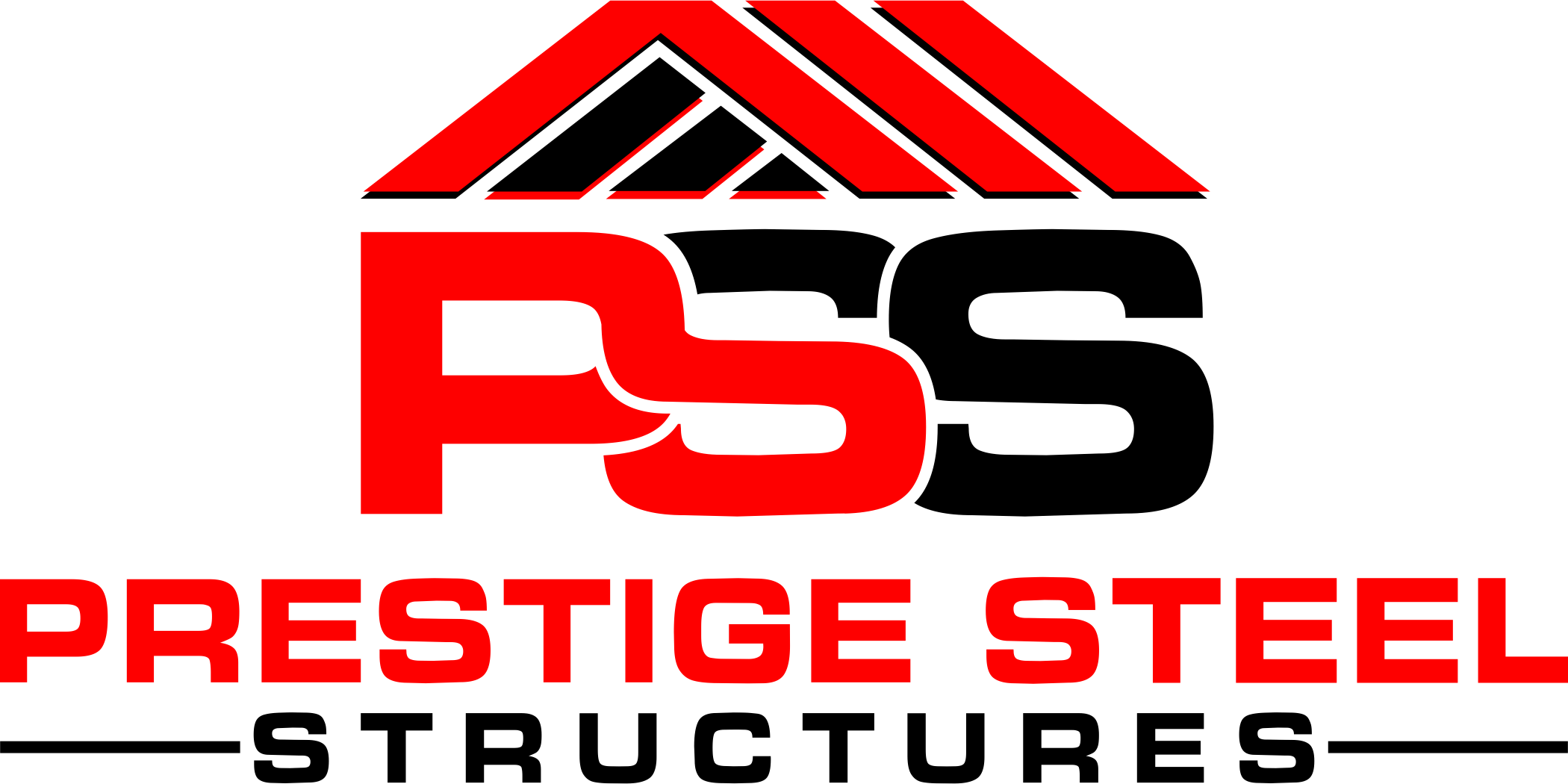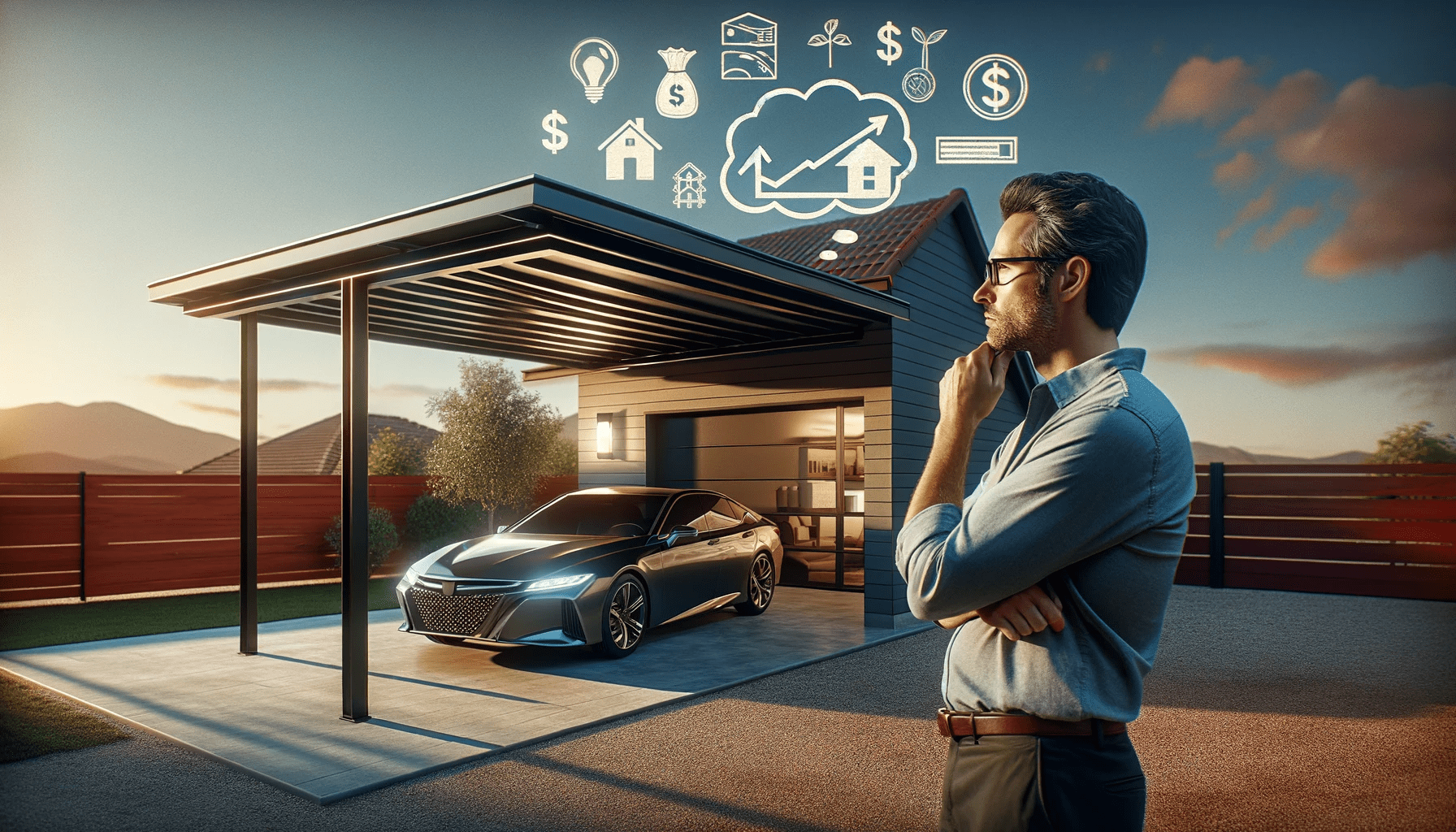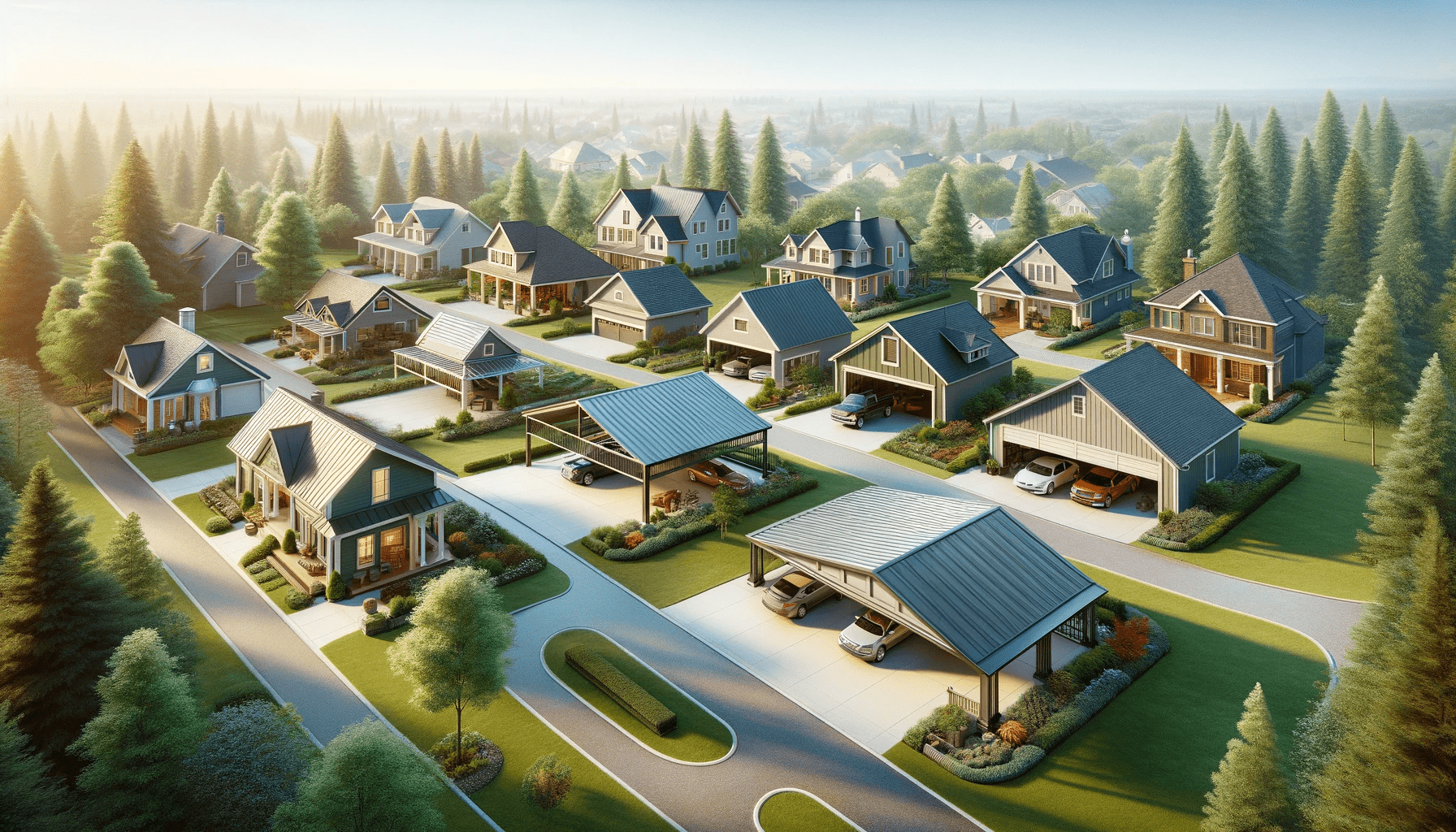Considering adding a metal carport to your home? While they offer practical benefits like protecting vehicles and storage, you might wonder if they also boost your home’s value. This outline explores the potential impact of metal carports on property value, considering various factors and offering insights to help you make an informed decision.
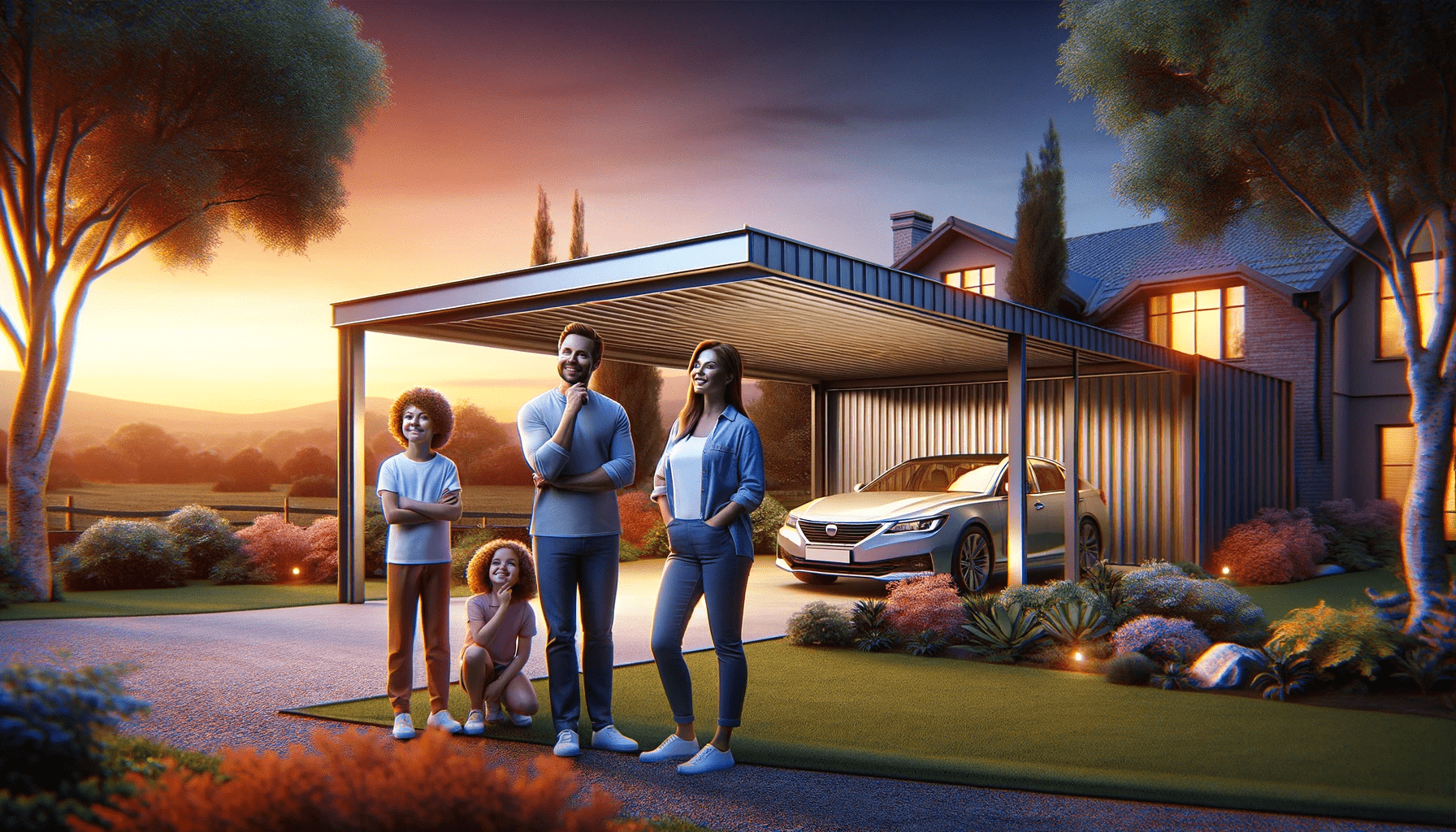
Benefits of adding a metal carport to your home
Increased Storage Space: Expanding Your Usable Outdoor Area
Adding a metal carport unlocks valuable storage space, transforming your unused outdoor area into a functional haven for various items. Here’s a deeper dive:
Vehicles
- Park multiple cars: Protect your vehicles from the elements, hail damage, and sun-induced fading. This can be especially valuable in regions with harsh weather conditions.
- Store recreational vehicles: Keep your RV, motorcycle, ATV, or trailer safe and secure under the carport, ready for your next adventure.
- Create a dedicated car care area: Utilize the sheltered space for car washing, detailing, or minor repairs, avoiding messy spills and sun glare on your driveway.
Beyond Vehicles
- Organize outdoor equipment: Store lawnmowers, garden tools, bicycles, and other bulky items, keeping them readily accessible and protected from rust and weather damage.
- Expand your workshop: Create a covered workspace for DIY projects, woodworking, or equipment maintenance, avoiding exposure to rain and harsh sun.
- Seasonal storage solutions: Use the carport for storing patio furniture, pool equipment, and holiday decorations during off-seasons, preventing clutter and extending their lifespan.
- Recreational haven: Transform the area into a sheltered outdoor entertainment space with tables, chairs, and string lights for BBQs, gatherings, or enjoying the outdoors year-round.
Flexibility and Customization
- Choose the right size: Opt for a larger carport to accommodate multiple vehicles and additional storage needs, or a smaller one for targeted use.
- Enclosed options: Consider partially enclosed carports for added protection from dust, wind, or prying eyes while maintaining open-air benefits.
- Storage solutions: Add shelves, cabinets, or pegboards to maximize storage capacity and organize your belongings efficiently.
Potential Drawbacks
- Visual impact: Ensure the carport design complements your home’s style and doesn’t clash with the neighborhood aesthetic.
- Security: Consider adding lights and security measures if storing valuable items.
Protection for Vehicles and Other Belongings: Shielding Them from the Elements
Metal carports act as a protective barrier, safeguarding your vehicles and belongings from a range of environmental threats:
Sun Damage
- Preserves vehicle paint: Protects against harmful UV rays that can cause fading, peeling, and cracking, ultimately maintaining your car’s resale value.
- Interior protection: Reduces interior heat buildup, preventing dashboard cracking, seat discoloration, and premature aging of leather upholstery.
Weather Protection
- Shields from rain and snow: Prevents car interiors from getting soaked, reducing rust and mildew risks and keeping belongings dry.
- Hail damage prevention: Offers a strong barrier against hailstorms, safeguarding your car’s bodywork from dents and costly repairs.
- Debris protection: Minimizes the risk of damage from falling branches, windblown dust, or bird droppings.
Additional Benefits
- Reduced maintenance costs: Protected vehicles may require less frequent car washes and waxing, saving you time and money.
- Extended lifespan: Proper protection can contribute to a longer lifespan for your car and other belongings.
- Important Note: While metal carports offer significant protection, consider adding additional security measures like locking storage cabinets or car covers for highly valuable items.
Enhanced Curb Appeal: Unveiling the Beauty of Metal Carports
Metal carports, often viewed solely as utilitarian structures, can be surprisingly impactful in boosting your home’s curb appeal. Here’s how:
Complementary Design
- Matching Architectural Style: Choose a carport design that echoes your home’s architectural elements. For example, a modern home might benefit from a sleek, minimalist carport with clean lines and metal roofing. A traditional brick house could be paired with a gabled carport featuring exposed beams for a rustic charm.
- Color Coordination: Select a carport color that harmonizes with your home’s exterior paint scheme. Matching colors creates a cohesive look and avoids an eyesore clash. You can even accentuate with contrasting trim or roofing colors to add visual interest.
- Material Harmony: Consider using materials that blend seamlessly with your home. If your house has wood siding, opt for a carport with wood accents or posts. Metal and stone homes might benefit from carports that incorporate similar materials for a unified aesthetic.
Visual Interest and Details:
- Adding Decorative Touches: Elevate the carport’s visual appeal with decorative elements like pergolas, latticework, or climbing vines. Consider incorporating outdoor lighting fixtures for added charm and functionality at night.
- Landscaping Magic: Surround the carport with well-manicured landscaping, including flowering plants, shrubs, or even a small water feature. This creates a welcoming and inviting atmosphere, drawing the eye and enhancing the overall aesthetic.
- Functionality as Beauty: Integrate the carport into your outdoor living space. Extend your patio underneath it, creating a seamless transition between indoor and outdoor areas. This not only adds visual interest but also expands your usable living space.
Additional Functionality: Transforming Your Metal Carport
Metal carports go beyond just protecting vehicles. Their versatility allows you to create unique and functional outdoor spaces to suit your needs:
Outdoor Oasis
- Covered Patio: Enjoy the outdoors, sheltered from the sun and rain. Add comfortable seating, string lights, and greenery for a relaxing lounge area perfect for entertaining or enjoying solitude.
- Dining Al Fresco: Extend your dining experience outdoors by creating a covered dining area under the carport. Install a barbecue grill, set up a table and chairs, and enjoy meals with family and friends in the fresh air.
- Play Zone: Convert the carport into a dedicated play area for children, complete with swings, slides, or even a sandbox. This keeps them entertained outdoors while protecting them from harmful UV rays.
Practical Solutions
- Outdoor Workspace: Craft enthusiasts can transform the carport into a dedicated workspace for woodworking, gardening, or even painting. Add workbenches, storage solutions, and proper lighting for a functional and organized space.Storage Haven: Utilize the carport for additional storage. Hang shelves, organize tools and equipment, or even store bikes and kayaks, keeping your garage clutter-free and maximizing your usable space.
- Home Gym Transformation: Create a dedicated fitness area under the carport. Install exercise equipment, yoga mats, or even a punching bag for a convenient and personalized home gym experience. Remember, the key lies in tailoring the additional functionality to your lifestyle and preferences. By creatively utilizing the space, you can unlock the full potential of your metal carport, enhancing both its practicality and your enjoyment of your outdoor space.
Factors to consider before installing a metal carport
Researching Requirements
Start with your local government website: Look for building department resources or search for “building permits” specifically mentioning carports.
Contact your local building department: They can clarify code requirements, specific permit types, and fees associated with your carport project.
Consider HOA regulations: If you live in a community with a Homeowners Association (HOA), review their guidelines for restrictions on size, style, placement, and materials for carports.
Check zoning regulations: Understand any zoning limitations regarding structures like carports in your area, including setbacks from property lines and height restrictions.
Understanding Key Details
Size limitations: Some areas have maximum square footage allowed for carports without a permit.
Foundation requirements: Permits may be needed for permanent foundations, while temporary ones might be exempt.
Wind and snow load requirements: Ensure your carport design meets local standards for these environmental factors.
Inspections: Be prepared for inspections at key stages of construction to ensure compliance.
Permitting Process
Gather necessary documents: This may include site plans, construction drawings, and materials information.
Submit your application: Pay the required fees and wait for approval, which can take several weeks.
Follow through with inspections: Cooperate with inspectors to ensure proper construction and adherence to codes.
Choosing the Right Size and Style
Space Considerations
Measure your available space: Consider driveway area, access clearances, and proximity to property lines.
Factor in vehicle dimensions: Ensure enough space for vehicles to comfortably enter, park, and maneuver within the carport.
Account for additional needs: Add space for storage shelves, workbenches, or other desired uses.
Researching Requirements
Start with your local government website: Look for building department resources or search for “building permits” specifically mentioning carports.
Contact your local building department: They can clarify code requirements, specific permit types, and fees associated with your carport project.
Consider HOA regulations: If you live in a community with a Homeowners Association (HOA), review their guidelines for restrictions on size, style, placement, and materials for carports.
Check zoning regulations: Understand any zoning limitations regarding structures like carports in your area, including setbacks from property lines and height restrictions.
Understanding Key Details
Size limitations: Some areas have maximum square footage allowed for carports without a permit.
Foundation requirements: Permits may be needed for permanent foundations, while temporary ones might be exempt.
Wind and snow load requirements: Ensure your carport design meets local standards for these environmental factors.
Inspections: Be prepared for inspections at key stages of construction to ensure compliance.
Permitting Process
Gather necessary documents: This may include site plans, construction drawings, and materials information.
Submit your application: Pay the required fees and wait for approval, which can take several weeks.
Follow through with inspections: Cooperate with inspectors to ensure proper construction and adherence to codes.
Choosing the Right Size and Style
Space Considerations
Measure your available space: Consider driveway area, access clearances, and proximity to property lines.
Factor in vehicle dimensions: Ensure enough space for vehicles to comfortably enter, park, and maneuver within the carport.
Account for additional needs: Add space for storage shelves, workbenches, or other desired uses.
Matching Your Needs
Single or multiple car coverage: Decide if you need parking for one or multiple vehicles.
Open or enclosed sides: Consider weather protection needs and desired level of privacy.
Storage needs: Choose a design that incorporates shelves, cabinets, or additional enclosed areas if needed.
Complementary Style
Match your home’s architectural style: Select a carport design that complements your home’s materials, colors, and overall aesthetics.
Maintain neighborhood harmony: Consider prevailing styles in your community and avoid any jarring contrasts.
Explore customization options: Many manufacturers offer color choices, roof styles, and additional features to personalize your carport.
Installation Considerations
DIY vs. Professional Installation
Assess your skill level: Consider the complexity of your chosen design and your experience with construction projects.
Evaluate tools and equipment: Ensure you have the necessary tools for safe and proper installation.
Factor in time constraints: DIY projects can be time-consuming, so assess your available time commitment.
Benefits of Hiring Professionals
Expertise and efficiency: Professionals ensure code compliance, proper assembly, and quicker completion.
Warranties and guarantees: Many professional installations offer warranties on materials and workmanship.
Peace of mind: Avoid construction stress and enjoy a professionally finished carport.
Cost Considerations
Compare DIY material costs: Include tools, fasteners, and potential mistakes that could lead to additional purchases.
Factor in professional installation fees: Get quotes from qualified contractors and compare them to DIY costs.
Consider long-term value: Compare long-term cost implications of DIY maintenance versus professional warranties.
By carefully considering local regulations, choosing the right size and style, and weighing the pros and cons of DIY versus professional installation, you can ensure your metal carport is a valuable addition to your home, both functionally and aesthetically.
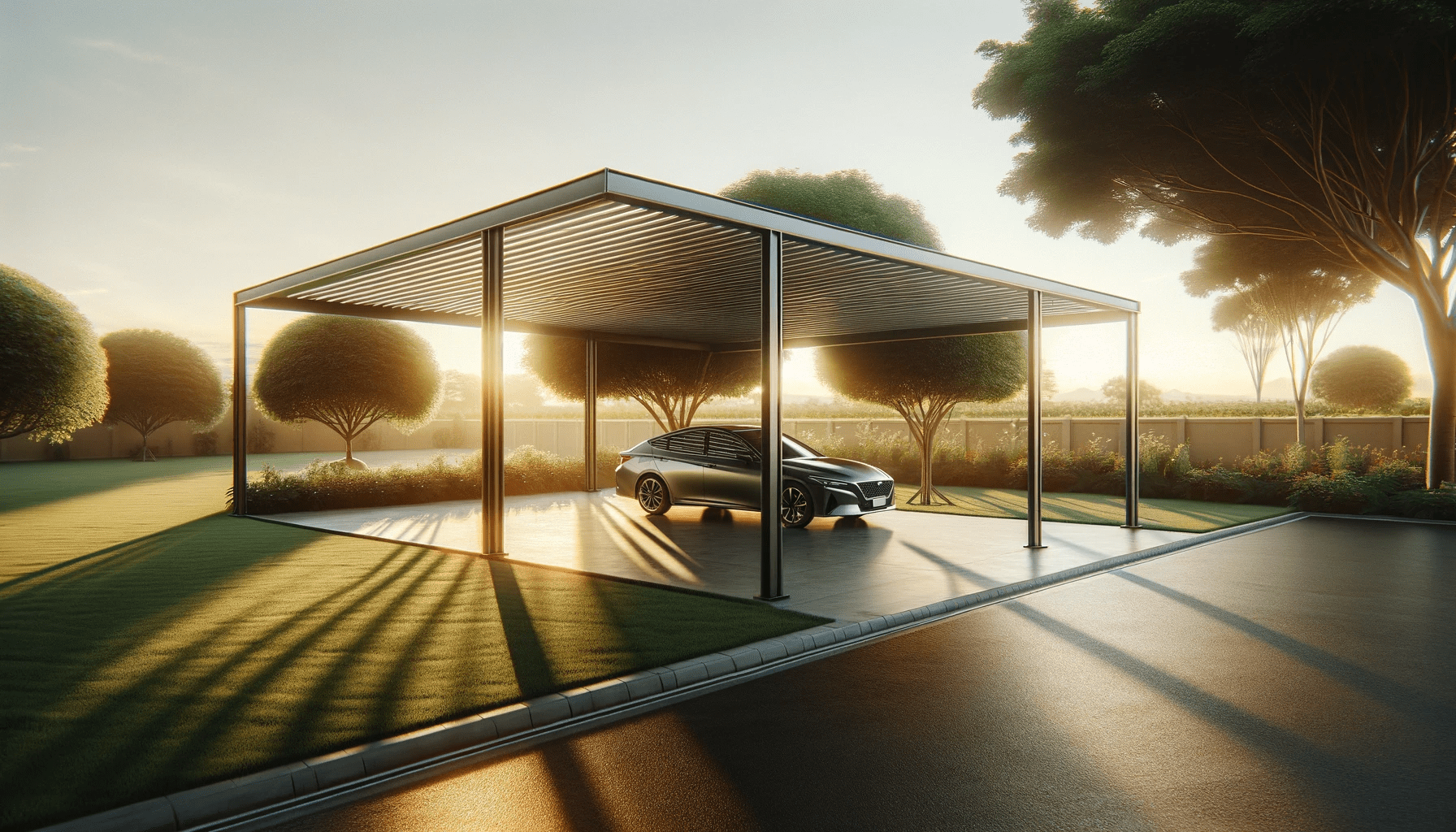
What is a metal carport?
A metal carport is a type of outdoor structure offering covered parking or storage without fully enclosing the area like a traditional garage. It typically consists of a roof and support structure, both usually constructed from durable materials like galvanized steel or aluminum. Compared to garages, carports lack enclosed walls, providing an open-air feel and easier access.
Key Features:
- Roof: Provides protection from harsh weather elements like rain, snow, sun, and hail. Available in various styles, including:
- Gable roof: A classic, symmetrical design with two sloping sides.
- Skillion roof: Offers a modern, single-sloped look.
- Hip roof: Slopes on all four sides for better wind resistance.
- Support Structure: Ensures stability and supports the roof. Options include:
- Single post: Affordable but with limited coverage area.
- Double post: Offers more stability and is suitable for larger carports.
- Multi-post: Provides maximum support for expansive carports or those subject to heavy snow loads.
- Open Design: Promotes airflow and natural light, preventing moisture buildup and creatinga spacious feel.
- Versatility: Can be used for various purposes beyond car storage, like:
- Covered patio: Create an outdoor living space for entertaining or relaxing.
- Tool and equipment storage: Protect bikes, lawnmowers, and other belongings from the elements.
- Recreational area: Set up a basketball court, badminton net, or swimming pool under the covered space.
Customization Options
- Size: Choose a carport size that accommodates your vehicles, storage needs, and available space.
- Materials: Opt for galvanized steel for affordability and durability, or aluminum for a lighter weight and corrosion resistance.
- Color: Select a color that complements your home’s exterior and personal style.
- Additional features: Add side panels for wind protection, enclose one side for storage, or integrate lighting for evening use.
- Remember:
Local building codes and regulations may influence carport design and installation.
Homeowner association (HOA) guidelines might restrict specific carport styles or materials.
By understanding these key features and customization options, you can choose a metal carport that perfectly meets your needs, preferences, and property style.
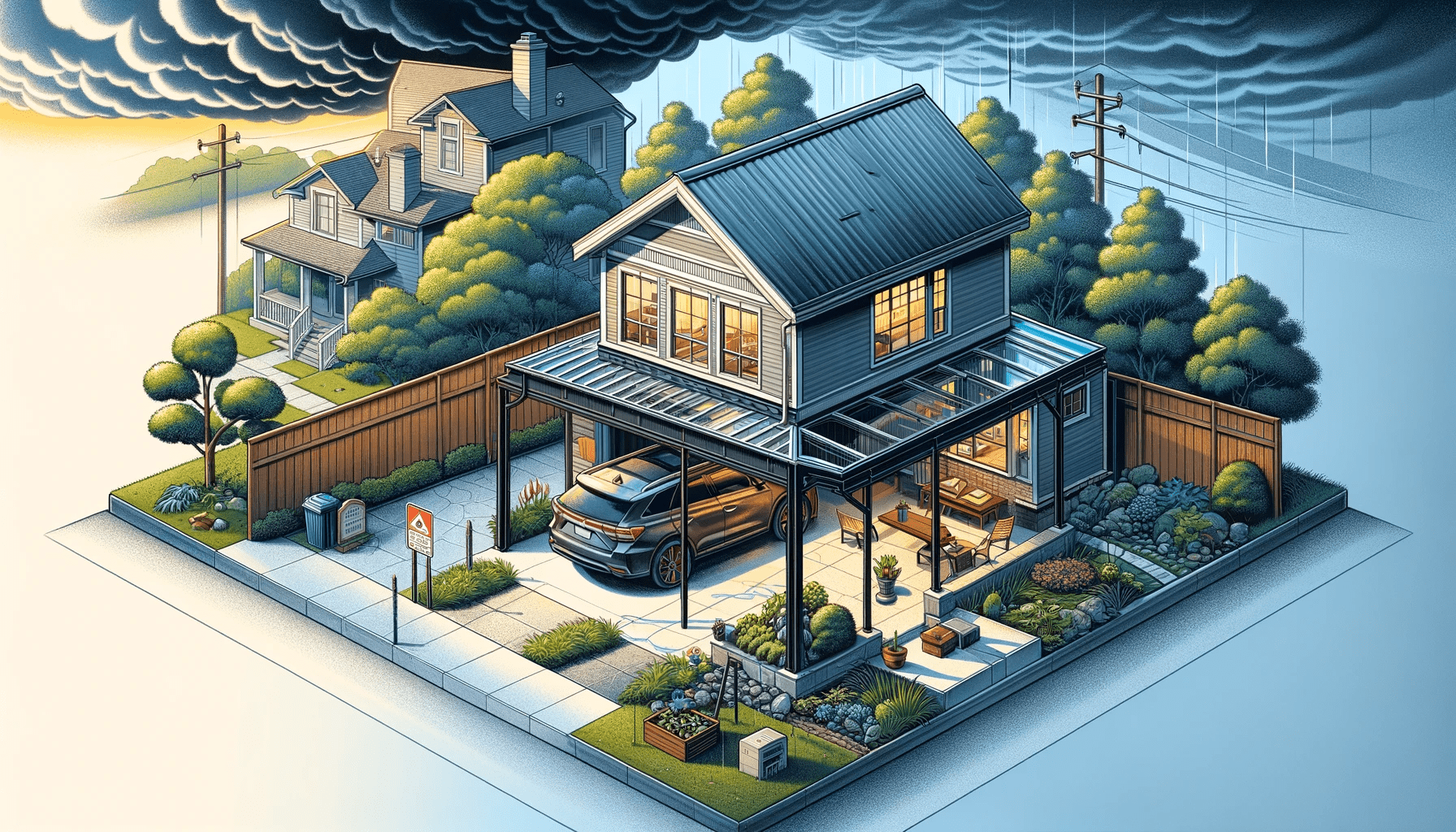
Potential drawbacks of adding a metal carport
Cost Considerations: Breaking Down the Numbers
While metal carports offer a more affordable alternative to garages, understanding the cost factors is crucial before making a decision. Here’s a detailed breakdown:
- Size: Naturally, larger carports require more materials and labor, leading to higher costs. Consider the number of vehicles you need to shelter and any additional storage needs to determine the optimal size.
- Style: Simple, single-car designs are the most budget-friendly. More elaborate styles like double-car carports, carports with attached storage sheds, or curved roof designs will incur additional costs.
- Materials: Steel is the most common and cost-effective option, but aluminum offers lighter weight and corrosion resistance at a premium. Consider your budget, climate, and desired durability when choosing the material.
- Installation: DIY installation can save money if you have the skills and tools. However, factor in the time, effort, and potential for mistakes. Hiring professionals ensures proper installation but adds to the cost. Consider warranty implications when choosing between DIY and professional installation.
- Permitting: Research local building codes and permitting requirements. Permitting fees can vary depending on your location and the size of the carport. Factor these costs into your budget.
- HOA Restrictions: If you live in a community with a homeowners association (HOA), be mindful of any restrictions regarding carports. These might include size limitations, material specifications, or aesthetic guidelines. Violating HOA rules can lead to fines and even removal of the carport, so ensure compliance before installation.
Visual Impact and HOA Considerations: Blending In or Standing Out?
Metal carports can significantly impact your home’s visual appeal. Here’s how to navigate the aesthetics and potential HOA regulations:
- Design Selection: Choose a carport design that complements your home’s architectural style and the overall aesthetic of your neighborhood. Consider factors like roof pitch, color, and material to achieve a cohesive look.
- HOA Regulations: If you have an HOA, familiarize yourself with their specific guidelines for carports. These might dictate permitted sizes, materials, colors, placement, and even visual elements like trim or decorative accents. Ensure your chosen design adheres to these regulations to avoid conflicts.
- Curb Appeal Enhancement: While some carports might be perceived as purely functional structures, choosing the right design and materials can actually enhance your home’s curb appeal. Opt for modern designs with clean lines or consider incorporating decorative elements like trellises or climbing plants to soften the look.
- Long-Term Value: Remember, a well-designed and well-maintained carport can add value to your property. By prioritizing visual appeal and adhering to regulations, you ensure it blends seamlessly with your home and neighborhood, potentially attracting potential buyers in the future.
Durability and Maintenance: Built to Last with a Little TLC
Metal carports offer excellent durability compared to other outdoor storage solutions. However, proper maintenance is key to ensuring their longevity:
- Regular Cleaning: Remove debris, leaves, and dirt buildup from the roof and support structure to prevent moisture accumulation and potential rust issues. Schedule regular cleanings, especially after heavy storms or windy seasons.
- Rust Prevention: While metal carports are generally rust-resistant, especially if galvanized or aluminum, periodic touch-up with rust-preventive coatings is recommended, particularly in areas with high humidity or coastal climates.
- Anchor Reinforcement: Over time, ground movement or strong winds can loosen the carport’s anchors. Regularly inspect the anchors and tighten them if necessary to ensure stability and prevent damage.
- Additional Maintenance: Depending on your chosen materials and local climate, additional maintenance tasks might be necessary. For example, aluminum carports might require occasional cleaning with a specialized solution to maintain their luster.
By following these tips and maintaining your metal carport properly, you can ensure it provides reliable protection and storage for years to come, potentially even adding to your home’s resale value in the long run.
Conclusion
Adding a metal carport to your home can offer practical benefits and potentially enhance its curb appeal. However, the impact on resale value depends on various factors. Carefully consider the local market, your needs, budget, and regulations before making a decision. By choosing the right design, ensuring proper installation, and maintaining it well, you can maximize the functionality and potential value that a metal carport brings to your property. Remember, it’s an investment that should align with your long-term plans and complement your overall vision for your home.

